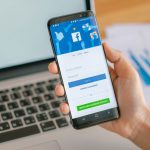Skip to content
Hand-PickedWeekly News
-
How Facebook Could Benefit Your Design Business
April 24, 2021 -
40+ Business Card PSD Templates for Photographers
January 11, 2018
Join OurNewsletter
Stay in touch by joining our weekly newsletter
Whoops, you're not connected to Mailchimp. You need to enter a valid Mailchimp API key.
This Month’s
Popular Posts
-
Unleashing the Potential of WordPress with MotoPress
June 1, 2023 -
How Facebook Could Benefit Your Design Business
April 24, 2021 -
40+ Business Card PSD Templates for Photographers
January 11, 2018 -
25+ Cool Skateboard Mockup Designs Ready for Photoshop
March 8, 2019



